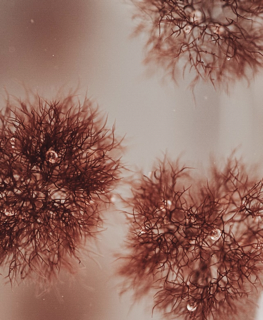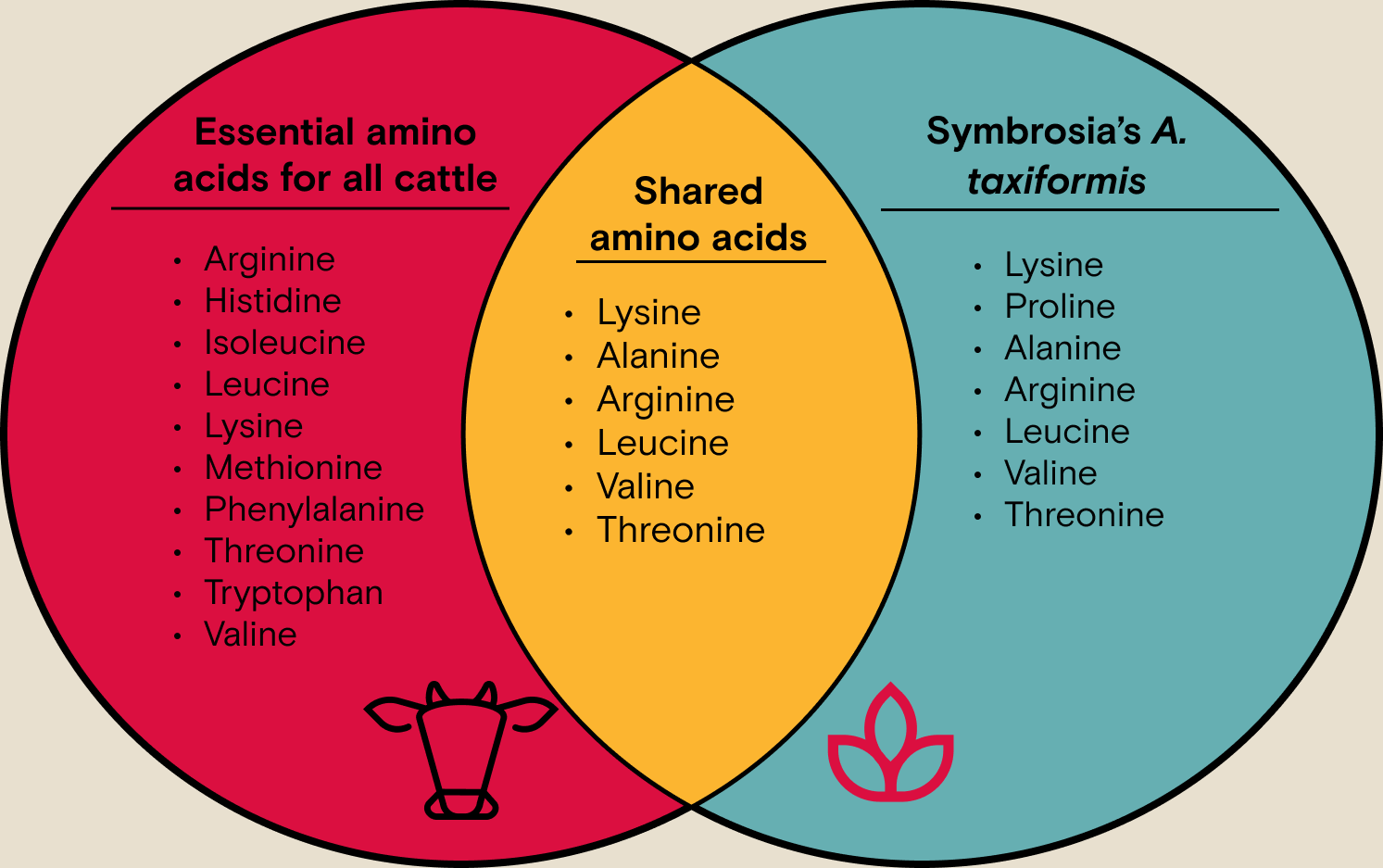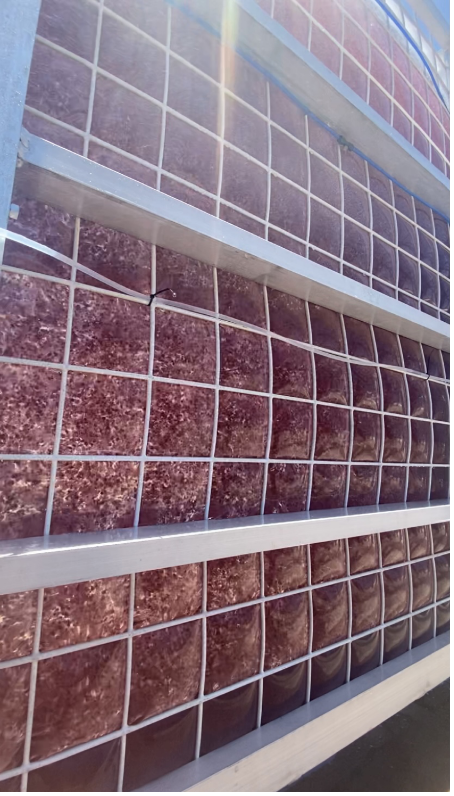More Than What Meets the Methane: Revealing the Elusive Powers of Asparagopsis taxiformis
Don’t underestimate the power of the seaweed!
Okay, we get it, Asparagopsis taxiformis reduces enteric methane emissions in cattle. Does the potential stop there? Nope! The answer is there is so much more.
We often celebrate this intriguing red alga for its role in environmental sustainability, but the truth is that it has a wealth of diverse nutritional properties that could extend far beyond the reduction of methane emissions in cattle.
In this blog post, we'll dive deeper into the multifaceted nature of A. taxiformis. We'll explore its various properties and applications, shedding light on its potential to revolutionize the worlds of animal agriculture and human nutrition.
ALT-ering the Game
Rumen pH can slightly increase with A. taxiformis implementation. With 950 g/kg dry matter intake of the seaweed, the pH has been shown to increase from 6.09 to 6.37, which can especially help in acidosis. Acidosis is essentially when the rumen of a cow has a pH that is lower than normal. It’s usually diagnosed when the pH falls below a range of 5.0 to 5.4. When cows go into acidosis, too much lactate can build up in their rumen and damage their rumens, but increasing rumen pH can alleviate this issue. On the other hand, alkalosis occurs when the rumen of a cow has a pH that is higher than normal and is usually diagnosed when the pH rises above 7.5. The pH increase with the seaweed is still at very safe levels for cattle.
Additionally, one study tested many components in cattle’s blood after doses of A. taxiformis and found some potential benefits:
Reduced levels of blood alanine aminotransferase (ALT) activity in dairy cows: This is an enzyme that can contribute to liver damage and metabolic and infectious diseases for cattle, so reduced levels can ensure better overall well-being for the animals.
Slightly reduced levels of BUN:creatinine ratio: Creatinine is a waste product filtered out by the kidneys. When there’s too much creatinine in the bloodstream, this is usually indicative of kidney disease.
Free Radicals Begone!
You’ve probably heard about antioxidants before but never really thought about what it does! Everyone, from animals to humans, generates free radicals all the time. These are essentially chemicals that cause oxidative stress in your body and can come from anything, from environmental pollution to exercise. Oxidative stress can cause some of the worst diseases including but not limited to: cancer, diabetes, atherosclerosis, Alzheimer’s Disease, asthma, and stroke. We’re not saying antioxidants can cure any of these diseases, but they can potentially help in prevention and reducing the severity of symptoms. But on a much lighter note, oxidative stress is also part of why we visibly age. Feel free to ditch that anti-aging cream for some sweet antioxidants! Just kidding, many anti-aging creams actually do have antioxidants.
But how do we know A. taxiformis has antioxidants? It’s constantly being exposed to very high amounts of oxygen and sunlight, inducing free radicals in its systems, but it never has any damage from it. Researchers looked into it further, and it turns out that the seaweed has natural antioxidants called polyphenols, which include Vitamin E, chlorophyll, and carotenoids. All of these have been investigated as pharmaceuticals for various diseases like Alzheimer’s Disease and cancer. Polyphenols have actually been found to inhibit a lot of the factors that cause cells to multiply abnormally, like cancer.
But for cattle specifically, the concerns with oxidative stress are mainly about pneumonia and mastitis. In male calves, carotenoids have been able to reduce the damaging effects of Mannheimia haemolytica pneumonia and improve their immune systems’ responses to it. Cows normally become deficient in Vitamin E after giving birth, and the vitamin helps protect cell membranes against oxidative stress, so this deficiency opens them up to a risk of mastitis. Supplementation with Vitamin E has helped cows in preventing mastitis.
On a similar note, A. taxiformis has chemical metabolites like alkaloids, polysaccharides, sterols, and quinines. Many of these metabolites are also being used to treat oxidative stress-related human diseases in the pharmaceutical industry right now.
Mineral Magic
Chances are, someone at one point in your life might have told you, “Drink milk! It has calcium and you need that for your bones!” While that is true, calcium is also important in nerve transmission, muscle contraction and hormone regulation for all animals. In dairy cattle specifically, hypocalcemia, or blood serum calcium levels below 2.0 mmol/L, around calving is a big concern in the industry. In fact, after a dairy cow gives birth, farmers will often supplement them with calcium to prevent this condition. Around 1.98% (dry matter) calcium has been found in A. taxiformis. Currently, there is no consensus on the maximum amount of calcium intake for cattle.
You might’ve also heard of zinc, but you might not know what it does. Zinc is involved in almost every function of the body including stabilizing RNA and DNA, producing insulin, maintaining the integrity of skin, helping in cell division, and many more! Zinc deficiency in cattle can affect skin tissues and bone health and manifest as appetite loss, growth reduction, and reproduction issues. Around 37 ppm of zinc has been found in A. taxiformis, and the maximum amount of zinc intake tolerable for cattle is 500 ppm.
Another important mineral found in the seaweed is manganese. Manganese helps in metabolic regulation by essentially helping enzymes function and bone formation, and it is also important in promoting healthy reproduction. Manganese deficiency in cows can lead to their calves not being able to stand properly with underdeveloped bones, and it can also lead to severe oxidative damage. Around 26 ppm of manganese has been found in A. taxiformis, and the recommended manganese intake for cattle is 20 to 40 ppm.
Aloha Amino Acids!
Red seaweed species also typically boast a rich amino acid profile and usually have high concentrations of leucine, valine, threonine, alanine, arginine, serine and glycine. What are these amino acids good for?
Leucine is essential in protein synthesis and is helpful in tissue regeneration and metabolism.
Valine is a great source of energy and protects against organ failure.
Threonine is important in nutritional metabolism, maintaining gut health, and cell growth.
Alanine is good for treating muscular degeneration.
Arginine helps with intestinal function.
Serine reduces neurotoxic compounds.
Glycine regulates immune response and prevents organ transplant rejections.
Specifically for cattle, there are 10 essential amino acids: arginine, histidine, isoleucine, leucine, lysine, methionine, phenylalanine, threonine, tryptophan, and valine. Dairy cattle particularly tend to produce more milk when supplemented with methionine, lysine, and histidine.
Did you notice any similarities between the amino acids that cattle need and what amino acids are already in A. taxiformis? So did we. That’s what led us to perform an amino acids profile on the A. taxiformis grown here at Symbrosia. While the seaweed had at least a little bit of every amino acid, the highest concentrations of amino acids in our A. taxiformis that are very beneficial to cattle are lysine, alanine, arginine, leucine, threonine and valine.
Fatty Acids: The True Anti-Hero
More often than not, we see fatty acids and lipids villainized all over the media. But did you know there are kinds of fatty acids that are super beneficial to you and to cattle? The key is complex fatty acids. When a fatty acid is more complex, it doesn’t pack together as tightly, so it’s easier for the body to break down for energy instead of potentially causing issues like clogging arteries. One of these kinds is unsaturated fatty acids. These are the kinds of fatty acids your doctor tells you to have. With more complex structures than saturated fatty acids, unsaturated fatty acids are often found in fruits and vegetables like avocados. But even more complex and arguably more beneficial than both of those are polyunsaturated fats. A. taxiformis is a huge source of both unsaturated and polyunsaturated fatty acids, including omega-3 and omega-6, which improve meat and milk quality, the immune system, and reproduction rates in cattle.
More Than What Meets the Methane
So we talk a lot at Symbrosia about how A. taxiformis helps reduce enteric methane emissions in livestock, but we really wanted to take this opportunity to appreciate the seaweed for many of its properties. It’s a multifaceted marvel that has so many benefits for humans, cattle and the environment! Imagine how much happier and healthier the cows being fed this seaweed would be and how much that can allow your health to flourish. Luckily, our product SeaGraze™ is made of 100% A. taxiformis, so no benefit is left diluted. How good does some crunchy red seaweed sound now?




